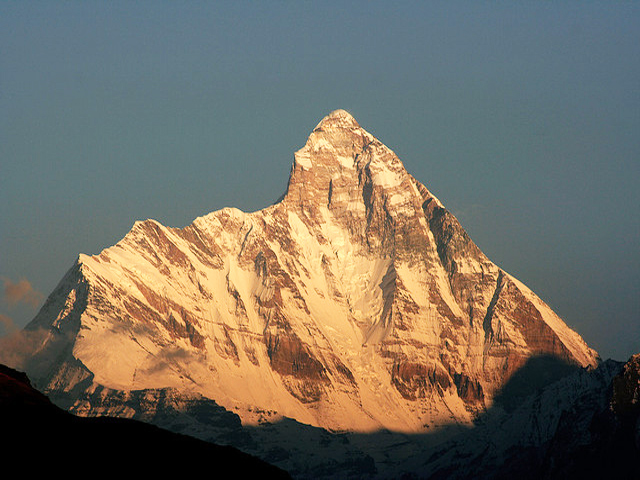
After being off-limits for nearly four decades, Nanda Devi, India’s second-highest peak, is set to reopen for mountaineering expeditions. Located in the heart of Uttarakhand’s Garhwal Himalayas, this iconic mountain—revered as a goddess and a symbol of local culture—will once again be accessible to climbers under a new tourism and conservation initiative.
The move is part of the Uttarakhand government’s renewed focus on promoting eco-tourism while creating employment opportunities and reviving the region’s cultural heritage.
Where is Nanda Devi?
Standing tall at 7,816 meters, Nanda Devi is the 23rd highest peak in the world and the second highest in India, after Kanchenjunga. It is located in the Chamoli district of Uttarakhand and forms part of the Nanda Devi Biosphere Reserve, home to the Nanda Devi National Park, a UNESCO World Heritage Site.
Surrounded by towering peaks and deep glaciers, the mountain is not only physically challenging but also environmentally sensitive. Its inaccessibility has made it one of the most mysterious and revered peaks in the Himalayas.
Cultural and Spiritual Significance
Nanda Devi is not just a mountain—it is deeply embedded in the cultural and spiritual identity of Uttarakhand. Worshipped as a form of Goddess Parvati, she is considered the patron deity of the region. Locals believe Nanda Devi is the daughter of the Himalayas, and her divine journey is symbolized through the Nanda Devi Raj Jat Yatra. The sacred pilgrimage takes place once every 12 years. This arduous trek is known as the “Kumbh of the Himalayas.”
These stories and rituals reflect a unique blend of mythology, ecology, and devotion, making Nanda Devi a symbol of faith, nature, and feminine power.
Why Was Nanda Devi Closed?
Mountaineering on Nanda Devi was banned in 1983 to protect its fragile ecosystem. Until then, climbers from around the world had attempted to scale its heights, starting with the historic 1936 British expedition by Bill Tilman and Noel Odell, who were the first to reach its summit. At that time, it was the highest peak ever climbed.
However, the mountain’s steep terrain, narrow passes, and environmental risks posed growing concerns. Matters were further complicated by a controversial secret Indo-US mission in the 1970s, during which a nuclear-powered monitoring device meant to spy on Chinese military activities was lost on the mountain, potentially endangering the environment. These factors contributed to the eventual closure of the peak for climbing.
Since then, access has been limited only to the base camp, keeping the summit out of reach for over 40 years.
Why Is It Being Reopened Now?
The decision to reopen Nanda Devi is part of a broader initiative led by the Indian Mountaineering Foundation (IMF) in collaboration with the Uttarakhand Forest Department and Uttarakhand Tourism. A formal proposal has been submitted, but final approval from the state government is still awaited.
Once approved, the move is expected to:
Boost tourism and local employment in remote Himalayan regions.
Promote eco-conscious trekking and mountaineering.
Revive interest in the cultural and natural heritage of the Nanda Devi Biosphere.
Other peaks, including Baljuri, Laspadhura, and Bhanolti in Bageshwar and Rudragaira in Uttarkashi, are also under consideration for reopening.
Guidelines for Climbers
If Nanda Devi is officially reopened, strict guidelines will be enforced:
Experience Required: Only seasoned trekkers with prior high-altitude trekking experience will be permitted.
Permit System: A permit will be mandatory, and climbers must go through a registration and screening process.
Group Travel Only: Solo climbing will not be allowed. All expeditions must be organized through authorized travel agencies.
Cultural Respect: As a sacred site, visitors will be expected to honor local traditions, customs, and environmental rules.
A Sacred Symbol of Strength and Nature
For the people of Uttarakhand, Nanda Devi is much more than a peak. She is a guardian, a mother, and a divine force whose blessings are believed to bring peace, prosperity, and protection. Her name resonates in songs, festivals, rituals, and legends passed down through generations.
Reopening the mountain is not merely an adventure opportunity—it is the revival of a living symbol of heritage and spirituality, balancing modern tourism with ancient reverence.
As preparations move forward, Nanda Devi may soon reclaim its place on the world map—not only as one of the toughest climbs but also as one of the most spiritually enriching journeys a mountaineer can undertake.
